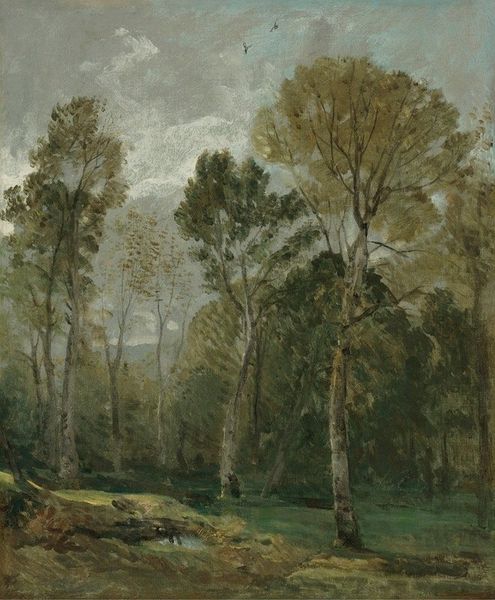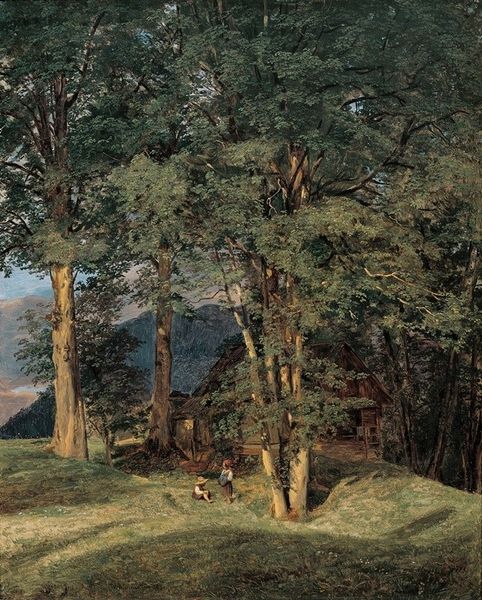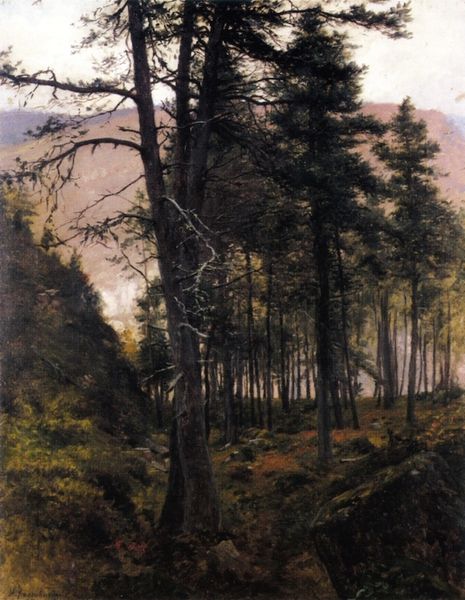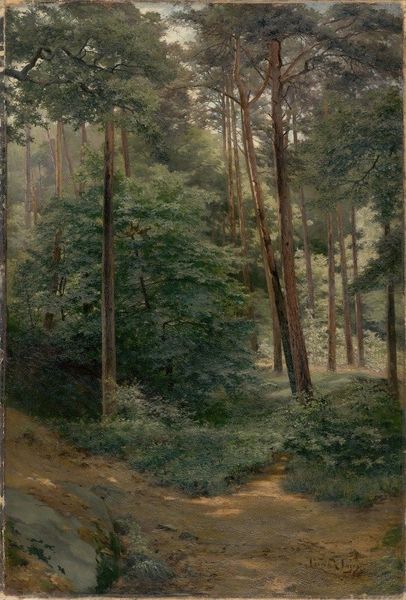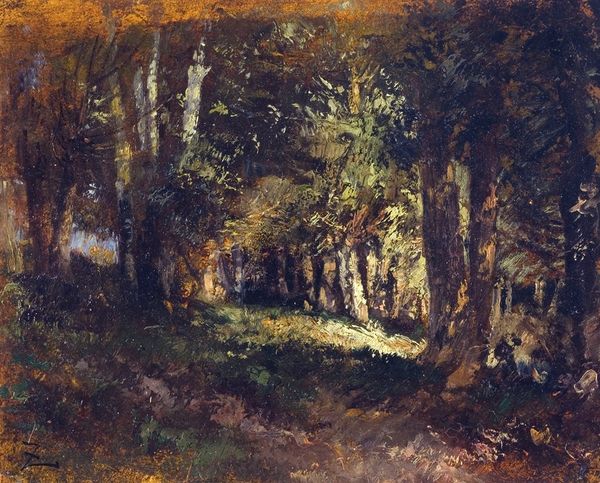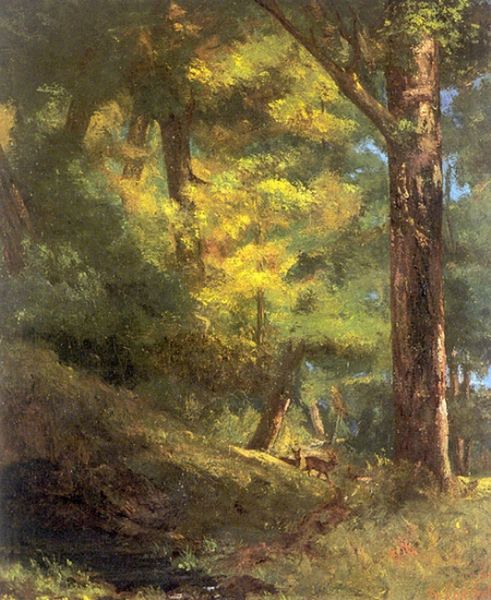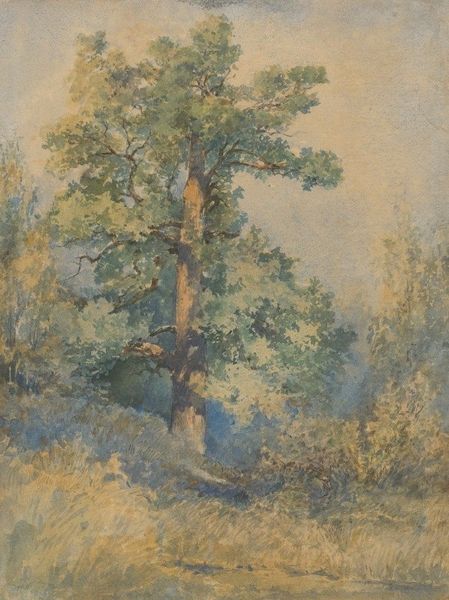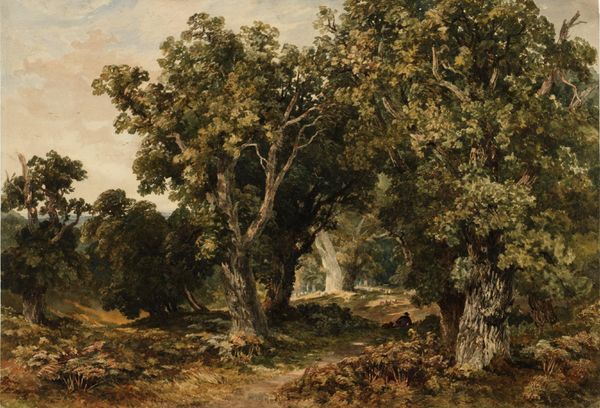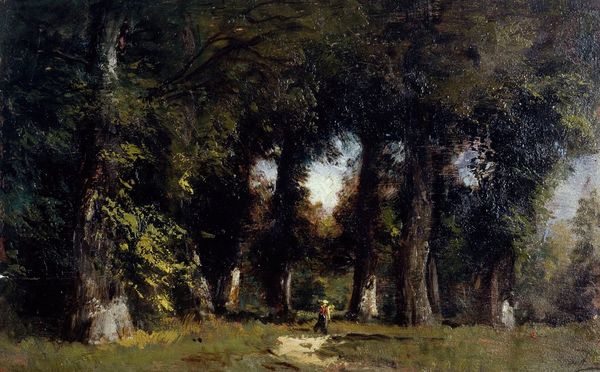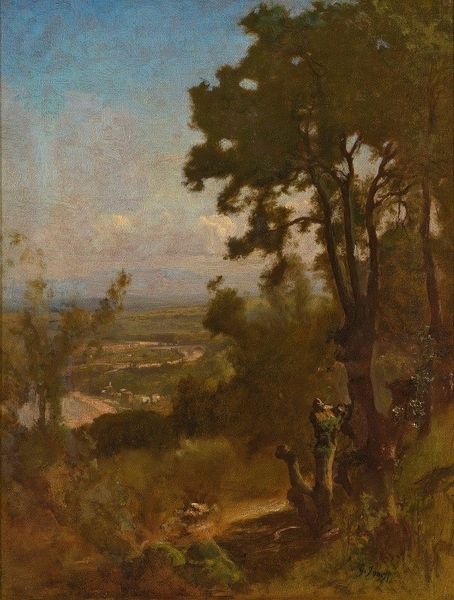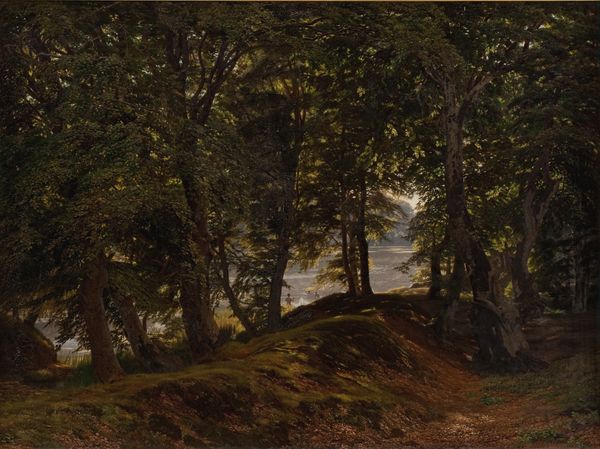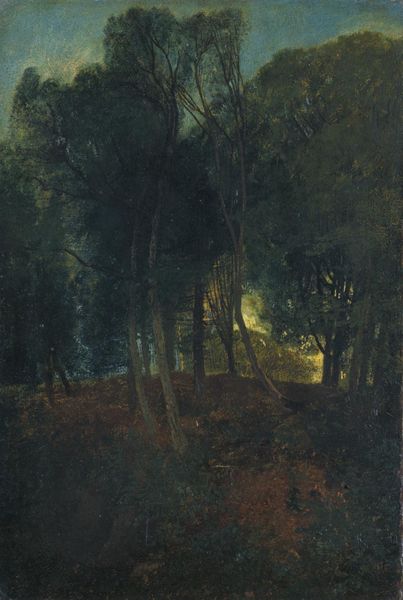
oil-paint
#
oil-paint
#
landscape
#
german-expressionism
#
expressionism
#
watercolor
Copyright: Public Domain: Artvee
Curator: This oil painting, titled "Eichenstämme im Vorfrühling," which translates to "Oak Trunks in Early Spring," was completed by Franz Marc in 1902. It presents a seemingly simple woodland scene. What strikes you about it initially? Editor: There's a somber feeling despite the 'early spring' designation. The palette leans towards browns and greys, and the light feels suppressed, as if a storm just passed or is looming. The trunks certainly dominate, they seem almost claustrophobic, really asserting themselves in the foreground. Curator: Indeed. Observe the composition, how the trunks are deliberately placed, anchoring the space and guiding the eye upward through the converging branches toward that sliver of clouded sky. What meanings might these shapes evoke? Editor: Given the date of the painting and the Expressionist movement to which Marc would later contribute, I see a nascent sense of unease and psychological intensity already present here. Nature is not presented as a serene, idealized backdrop, but as something raw and almost imposing. Think about the cultural shift at the beginning of the 20th century - the rapid industrialization, urbanization - the woods may represent an attempt to recapture something untouched. Curator: Consider, too, the materiality. Marc's visible brushstrokes aren't simply descriptive; they're expressive. They seem to sculpt the forms, adding to the sense of volume and almost tactile roughness of the trees. He seems to give volume to what some may consider insignificant spaces within nature. The eye bounces between tree branch to hill side. Editor: This relates to the shift toward valuing individual experience over objective reality within modern artistic practice. Marc used these scenes not simply to depict nature, but to explore his emotional relationship with the natural world, and perhaps with Germany. In the beginning of the twentieth century many German painters wanted to capture that which was uniquely German. The forest served that purpose quite well. Curator: Yes, and reflecting on the artwork again through that lens is fascinating, giving more insight into the complex emotional landscapes explored by German Expressionism. Editor: Precisely. It certainly transforms how I viewed what initially seemed a fairly straightforward landscape. It makes you consider your own space in the German woodland.
Comments
No comments
Be the first to comment and join the conversation on the ultimate creative platform.
